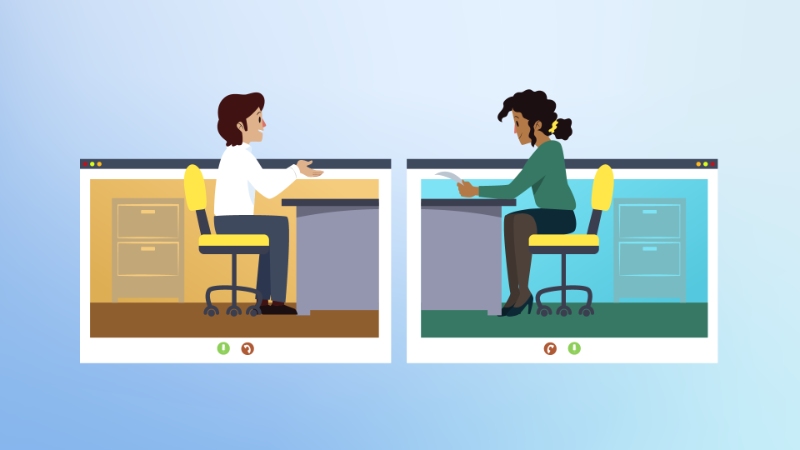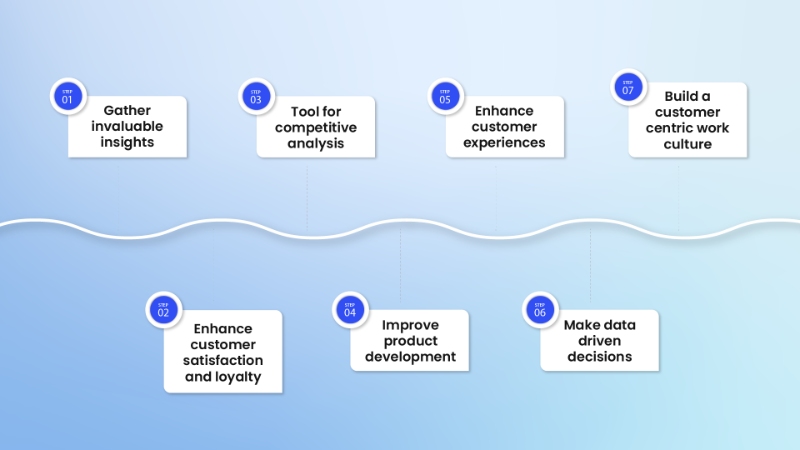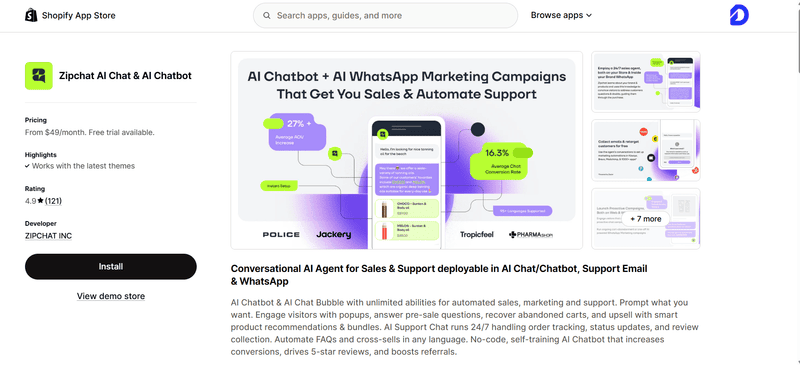
Every business has to be customer centric for it to succeed. And for that to happen, having a finger on the pulse of what your customers need is essential.
One of the most effective ways to know what your customers feel about your products and understand what their needs are is by paying attention to customer feedback. In this short read, we’re going to discuss the importance of customer feedback, how to collect feedback from customers and how to use customer feedback.
Importance of customer feedback
We’ve all seen businesses put up boards that read, “The customer is king!”, haven’t we? Well, it isn’t too far from the truth.
For any business to become successful, it is important for them to address a certain need that their customers have. And what better way to understand what that need is than by asking the customers themselves?
Simply put, customer feedback acts as a way for businesses to learn what their customers like about their products or services, what areas of improvement are there, and what their customers expect of them.
Collecting customer feedback
While there are plenty to collect customer feedback, there are questions that you as a business must ask yourself before you begin harvesting that data.
First off, ask yourself which area of your customer experience do you want feedback on? Is it checkouts? Onboarding? Product features? Delivery? Customer service? Or are you looking for an insight on the overall experience?
Next, ask yourself what you intend to do with the feedback you receive. For example, if you’re an online grocer, and you find that your customers feel navigating your website could be easier, would you be willing to invest in redesigning your ecommerce website?
And finally, ask yourself which channel of collecting feedback would work best for your business. Of course, you’ll be able to decide that only once you’ve discovered the ways you could go about collecting customer feedback.
1. Feedback surveys
While feedback surveys are an effective way to get valuable insights from your customers, you need to pay attention to the way these surveys are formulated.
If you already know what issues you want to target with these surveys, you could opt for a short survey pop-up on your website while customers are active there.
For longer surveys, you’d be better off sending your customers the survey via email and waiting for them to respond.
In either case, here are a couple of things for you to keep in mind.
Keep the survey as short as possible and only ask relevant questions.
Ask open ended questions, allowing your customers to properly explain their points of view.
Never use leading questions that put words in your customer’s mouths.
Use consistent rating scales on all your surveys.
2. Emails
Emails are a more personal way to get customer feedback. Here are some tips to optimize responses while asking for feedback via email.
Personalize each email by addressing it to the customer instead of sending out generic emails.
Be clear in the email about what areas you expect feedback on.
Be sure to reply to each email response you receive. This shows the customers that you’re actively listening to them. In fact, mention when they can expect you to respond when you send them the email survey.
3. Usability tests
Usability tests are great when you want customer feedback on how your product or service performs. Ideally, tie the usability test with a reward. This is sure to encourage customers to participate and give you honest reviews.
For example, let’s go back to assuming you’re an online grocer. Offer your customers a 20% discount per order for a month, and ask them to keep a note of every delivery experience.
This will give you invaluable insights about delivery times, packaging, delivery partner behavior and more.
4. Customer interviews

This involves having a one-on-one conversation with your customers and asking them for feedback directly. Keep in mind, this does not have to be in person. You could do this using Skype, Google Meet or one of the many other video conferencing tools available.
While these exploratory interviews do give you unparalleled insights into customer behavior and choices, here are some tips to help you design the interviews better.
Once again, allow customers to dig deep and share experiences with you by having open ended conversations with them.
While it is always good to begin these conversations with a more generic stand point, be sure to ease the customer into the details you want to get from them.
Spend more time listening to what the customer is saying rather than talking about your point of view. Keep circling back to key observations they make, making sure they know you’re paying attention to what they’re saying.
5. Social media
Social media platforms can be a great source of customer feedback. For one, customers tend to post about and discuss brand interactions on these platforms, often tagging the brands. This gives you the perfect bird’s eye view of what public sentiment is about your brand.
In addition, you can use social media platforms to run quick single question surveys, once again allowing you to sound out what customers feel about your business and what they expect.
Uses of customer feedback
Important data gleaned from customer feedback is of no use if you do not put it to good use. Here are some ways you can effectively make use of customer feedback.

1. Gather invaluable insights
Analyzing customer feedback patterns can give you invaluable insights into trends, pain points, and emerging needs. You can use this information to identify common issues that customers face, allowing them to prioritize improvements and solve recurring problems efficiently.
These insights can also help shape future product development and market offerings, mirroring the customer’s needs.
2. Enhance customer satisfaction and loyalty
When customers feel heard and see that their feedback is acted upon, it fosters a sense of trust and loyalty towards your brand. When you have happy customers, it increases the chance of them becoming repeat customers and increases customer lifetime value.
Customer feedback also gives brands the opportunity to proactively address negative customer experiences, and convert these into positive customer experiences.
3. Tool for competitive analysis
Customer feedback not only sheds light on your brand's strengths and weaknesses, it also provides valuable information about competitors.
By analyzing customer feedback about competing products or services, you can easily identify gaps in the market, areas where competitors may be falling short, providing you with the perfect opportunity to gain a competitive advantage.
4. Improve product development
One of the most significant advantages of customer feedback is its role in shaping product development.
You can base the fine-tuning of existing products, adding new features, and creating new market offerings based on customer feedback.
This iterative process based on customer inputs is a great way to address immediate customer needs, helping your business remain relevant and competitive.
5. Enhance customer experiences
Customer feedback is an essential tool for continuously improving the overall customer experience.
Whether it's streamlining the purchase process, improving website navigation, or addressing customer service issues, leverage customer feedback to create a seamless and enjoyable experience for your customers.
6. Make data driven decisions
Regularly collecting and analyzing customer feedback enables you to track progress over time.
By comparing feedback data from different periods, your brand can assess the impact of changes you’ve made and measure the impact of those changes on customer satisfaction.
This data driven approach to decision making is a more effective way to ensure your business stays on its path towards success.
7. Build a customer centric work culture
When you prioritize customer feedback and actively act upon it, you build a customer centric culture within the organization.
This ensures your entire team understands the significance of customer satisfaction and engagement, and makes them more responsive to customer needs.
This customer centric approach sets your business on the right path to long term success, and is sure to put you in a different league from your competitors.
Build a seamless customer feedback program with Dyrect
We at Dyrect specialize in building post-sales engagements that are second to one. Among our arsenal of specialized post-sales tools is our feedback engine.
The feedback engine is a part of our no-code builder that allows you to create and run efficient customer feedback programs and resolve customer queries in a matter of minutes.
Contact our team of experts today and sign up for a demo to learn more about this and our other exceptional post-sales offerings, including harvesting first-party data, building omnichannel engagement and more.



